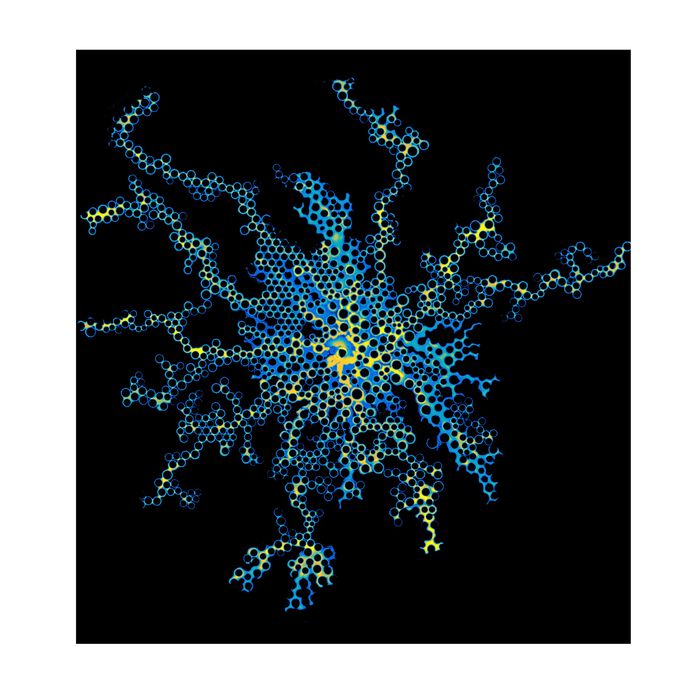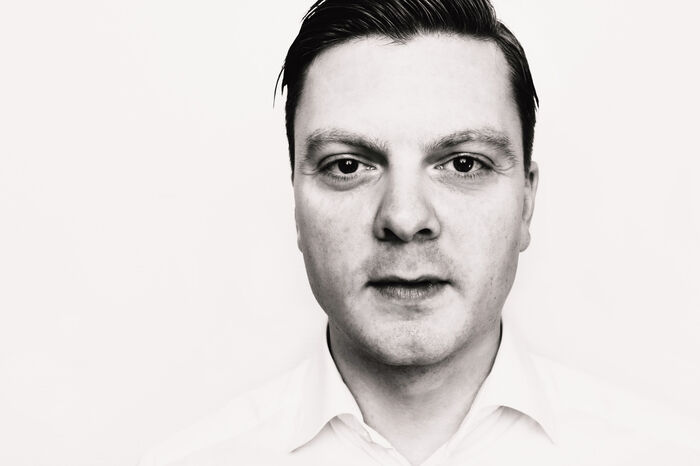Seminarer - Side 6
Colloidal particles at an interface have numerous applications to emulsion and foam stability, self-assembly and material fabrication and processing. while their dynamics involves issues of drag and diffusion, heterogeneity and interfacial pinning. Furthermore, for nanoparticles whose size may be comparable to the width of the interface, continuum modeling may break down. We show how molecular dynamics simulations of atomically-resolved homogeneous and Janus nanoparticle systems can address these issues and provide an understanding of hydrodynamic drag variation and hysteretic phenomena in this situation.
Title: Directional spreading of a viscous droplet on a conical fiber
Title: Microscale wave breaking and airflow separation in stratified two-phase pipe flow
by: Petter Vollestad, matematisk institutt, UiO.
Abstract: We perform an experimental study of stratified gas-liquid pipe flow with the aim to detect small-scale wave breaking and its influence on both the gas and liquid phase. Particle image velocimetry (PIV) is applied simultaneously in the two phases, and a criterion based on the vorticity in the crest region is used to detect microscale breaking waves. Airflow separation is frequently observed, and the study aims to investigate the correlation between small scale wave breaking and airflow separation above waves. Results indicate that at moderate gas flow rates, microscale wave breaking has a stabilizing effect on the airflow above waves, reducing the sheltered region in the lee of the wave crest and the turbulence directly above the waves. At higher gas flow rates, no influence of wave breaking on the airflow is observed.
Title: Cement foams: yield stress and stability
Title: Taming nonlinear dynamics using Deep Reinforcement Learning
by: Jean Rabault, Miroslav Kuchta, Ulysse Réglade and Nicolas Cerardi
Abstract: Machine Learning (ML) methods are a promising way to perform optimal control. In a recent book ('Machine Learning Control - Taming Nonlinear Dynamics and Turbulence', Duriez et. al., 2017), several ML methods were presented as well as a couple of benchmarks. One particular benchmark is a small system of ODEs that present features, such as multimodality and cross-talks, that are representative of more complex systems found in Fluid Mechanics.
In this seminar, we present ongoing work about active control of this system of ODEs.
Christophe Henry
Post doc at Observatoire de la Cote d'Azur, Laboratoire Lagrange
Soft and Wet is Different
Emerging instabilities and bifurcations from deformable fluid interfaces in the inertialess regime
In this talk, I will present two studies regarding the dynamics of droplets in the creeping flow, focusing on the arising instability and bifurcation phenomena. The first work investigates a buoyancy-driven droplet translating in a quiescent environment and the second a particle-encapsulating droplet in shear flow. There-dimensional simulations based on versatile boundary integral methods were employed to explore the intriguing instability and bifurcation phenomena in the inertialess flow. In the first work, a non-modal stability analysis was performed to predict the critical condition of instability; and in the second, a dynamic system approach was adopted to model and characterize the interacting bifurcations.
Andreas Carlson og Jean Rabault
Nature has invented ingenious aerodynamic design solutions, some of which are critical for plants as wind dispersal of seeds and fruits is coupled to their flight performance. This formulates into an optimization problem for plants: large seed wings can lead to increased lift and more efficient dispersion, but are costly for the tree to build and can more easily be trapped in the canopy. Double winged seeds/fruits separate from their tree when a specific level of dessication is reached, and autorotate as they descend to the ground. This leads to the question: how is the wing curvature of seeds/fruits linked to their flight performance? To answer this, we develop a theoretical model that suggests the existence of an optimal wing curvature that yields maximal lift. To further understand the interplay between the flow and the wing geometry, we perform a synthetic seed adaptation by deploying 3D printing of double winged fruits that we use in flight experiments, where we span the phase space of aerial dynamics by changing the of wing curvature and seed/fruit weight. Experiments confirm that there is a sweet-spot in curvature to maximise the flight time consisted with geometrical measurements from a wide range of seeds in Nature. Our results highlights the importance of not curving too much or too little for helicopter fruits to have an optimal flight performance.
Elisabeth Seland
In my job as research adviser, I receive a lot of questions about rights, possibilities and problems in connection with scientific publishing and open access. Both EU and the Norwegian Research Council have rules about this, and there is also a UiO policy in place that is relevant for all employees. I will give a short presentation to try to clear up what you have to, must, may, could and should related to Open access. In my experience many of you have the same questions about these issues, so I hope you bring your questions with you and we can address them in the seminar.
When and how surface structure determines the dynamics of partial wetting
Sedimentation-diffusion equilibrium of Quincke rollers
Study of the air-flow very close to the surface of wind-generated water waves Marseille large air-water facility
Activity at IFE Wind Energy: numerical modeling of offshore wind turbines
IFE (Institutt for Energiteknikk) is a research center located in Kjeller. The wind group at IFE mainly works with the development and analysis of new cost effective concepts for offshore wind energy, both concerning innovative rotor designs and new concepts for substructures. The group main investigation tool is the in-house software 3DFloat, an aero-elastic code which can simulate the whole wind turbine structure when exposed to the associated environmental loads (wind loads, hydrodynamic loads, soil loads if bottom-fixed).
In the presentation, an insight into the wave kinematics and wave loads modeling tools that are currently included in 3DFloat will be provided.
Bioprocessing of marine and agricultural by-products
Perfeksjon fra bønne til kopp
Hvordan jobber Tim Wendelboe i sin jakt på den perfekte kopp med kaffe?
Tim er både kaffebonde, kaffebrenner og barista og vil gi deg et lite innblikk i alt arbeidet som ligger bak hver kopp kaffe som serveres i hans kaffebar på Grünerløkka.
Large Eddy Simulation of the interaction of water waves with turbulent air flow


